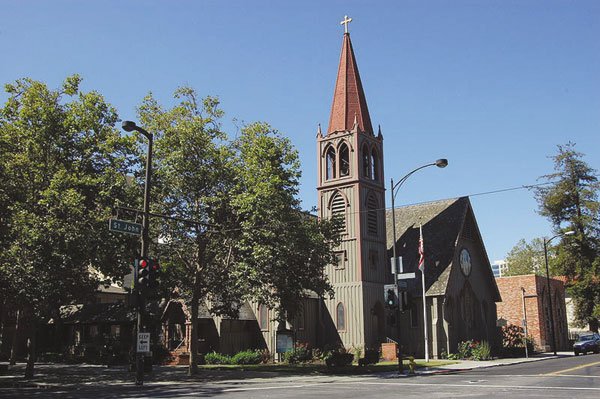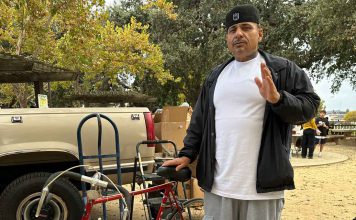The
”
Eucharist
”
(Greek for
”
thanksgiving
”
) has been the central act of Christian worship since the
earliest days of the Church.
The “Eucharist” (Greek for “thanksgiving”) has been the central act of Christian worship since the earliest days of the Church.
Almost all Christian churches celebrate this sacrament, but with varying frequency and degrees of ceremony. Other names for this rite include “Holy Communion,” “Divine Liturgy,” “Mass” and “Lord’s Supper.”
The institution of the Eucharist is recorded by Paul in I Corinthians and in the Gospels of Mark, Luke and Matthew. The book of Acts makes it clear that from a very early date it was a regular part of Christian worship.
The Book of Common Prayer describes the origin of this rite in this prayer: “On the night he was handed over to suffering and death, our Lord Jesus Christ took bread; and when he had given thanks to you, he broke it, and gave it to his disciples and said, ‘Take, eat: This is my body which is given for you. Do this for the remembrance of me.’
“After supper he took the cup of wine; and when he had given thanks, he gave it to them, and said: ‘drink this all of you: This is my Blood of the new Covenant which is shed for you and for many for the forgiveness of sins. Whenever you drink it, do this for the remembrance of me.'”
On Nov. 28, a “re-enactment of a first century Eucharist” was held at Trinity Episcopal Cathedral in downtown San Jose. The celebrant was the Rt. Rev. Mary Gray-Reeves, Bishop of the Diocese of El Camino Real, assisted by the Very Rev. David Bird, Dean (pastor) of the Cathedral, as well as a United Church of Christ minister, a Lutheran pastor and other clergy.
The service was based on several early Christian documents, some not included in the New Testament. While the clergy performed the sacramental acts, the event was narrated by Brent Walters, a religion professor at San Jose State University and host of the popular “God Talk” program broadcast Sunday mornings on KGO Radio.
According to Walters, an “Agape” (Greek for “love”) Feast preceded the Eucharistic celebration, a meal where Christians of all stations of life dined together. Those with means provided food for the poor at the table.
The liturgy that followed was presided over by a “bishop” (Greek for “overseer.”) He was assisted by “deacons” (Greek for “servants” or “waiters”) who were responsible for assisting at the Eucharistic ceremony and bringing the remaining bread and wine to those who couldn’t attend as well as distributing offerings to the poor.
The service followed this format:
– Reading from the Psalms.
– Reading from a Gospel.
– Instruction in the faith (sermon, homily).
– Prayers.
– Confession (At the Cathedral participants were asked to tell the person next to them about a relationship they would like to improve.)
– Symbolic sacrifice: Blessing of the bread and wine through prayer, wine mixed with water to symbolize both the human nature of Jesus and his death. The congregation responded with “amen” to signify their agreement with what had gone before.
– An exhortation or warning to take the bread and wine worthily to qualify for resurrection.
– More readings, including gospels not included in the current Bible and letters from founders of the local church or members who were away.
– Gathering the remaining bread and wine to share with absent members. (Sunday’s participants were asked to take along a loaf of bread to share with someone who may be hungry.)
– Collection of an offering for the poor, widows, orphans, and support of the clergy.
– Final prayers.
– Benediction/blessing.
The Eucharist was followed by a time to ask Walters questions. He made several points:
– Early Christians sang, generally Psalms, but instrumental music wasn’t introduced until the third century.
– Early Christians usually met in homes, with the homeowner often presiding at the Eucharist.
– The fish was a symbol of Christianity before the cross: As a fish can’t live without water, Christians can’t live without the Holy Spirit. Fish was a staple of meals that sustained the poor.
Trinity Cathedral (81 N. Second St.), the location of this event, is the oldest church in San Jose. Built in 1863 in the Carpenter Gothic style of redwood logged in the Santa Cruz Mountains, it was cut in half in 1876 and pulled apart, doubling its seating capacity. In later years, a bell tower was added, as well as classroom and administrative space on its property facing St. James Park.
Beginning in January, Walters will host an online course on Paul’s epistle to the Romans. The class will be part of his College of Early Christian Studies and feature “video clips, images and literature of the period in order to provide meaningful content on early Christianity and the culture in which it thrived.”
For more information, e-mail kg********@***oo.com













